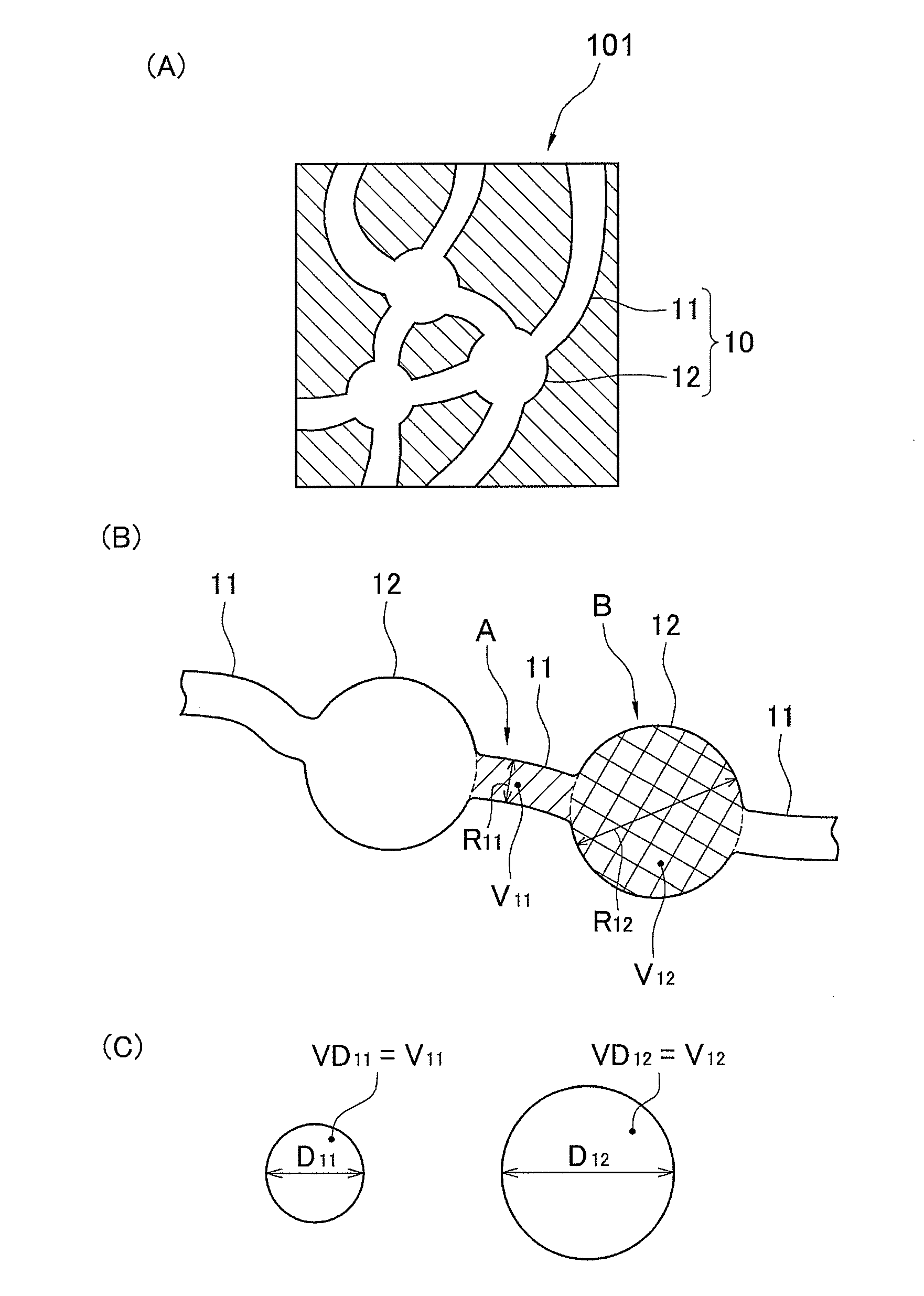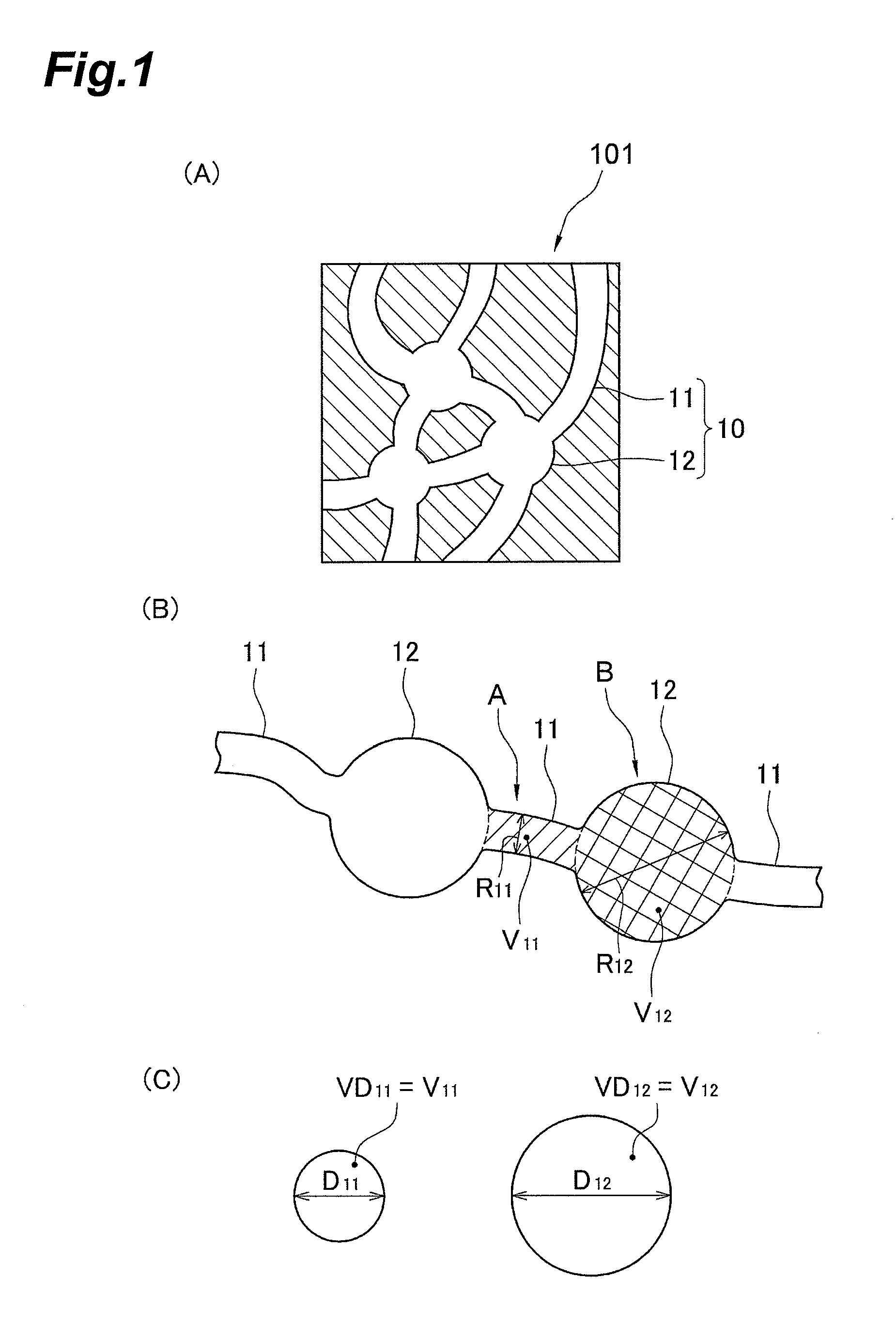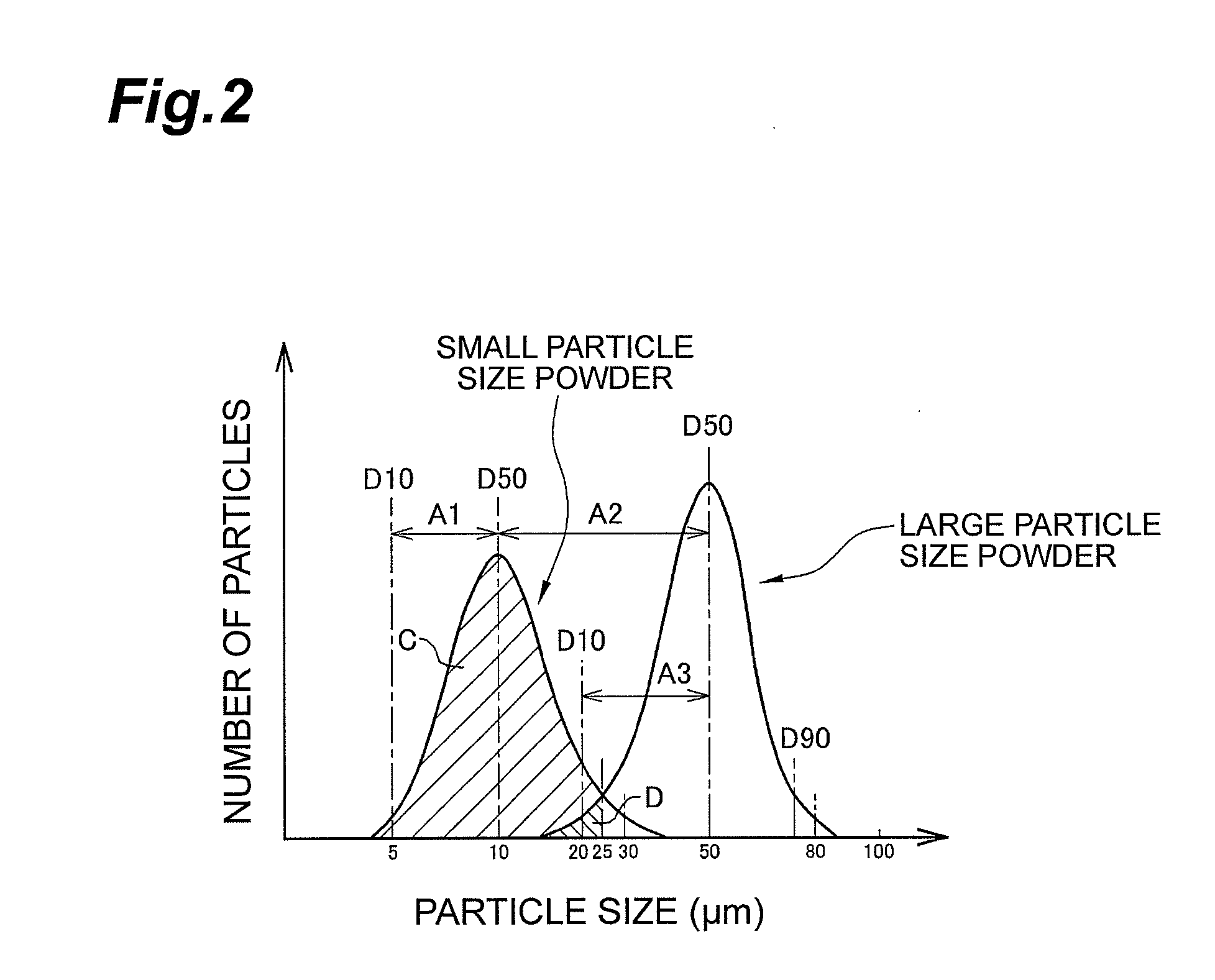Process for production of honeycomb structure, honeycomb structure, and particulate filter
a technology of honeycomb and manufacturing method, which is applied in the field of honeycomb structure manufacturing method, honeycomb structure, and particulate filter, can solve the problems of increasing pressure loss, difficult to obtain a honeycomb structure having a desired fine particle collection function and a desired pressure loss, and increasing pressure loss, so as to prevent an increase in pressure loss, prevent the leakage of the object, and maintain the collecting efficiency of the object
- Summary
- Abstract
- Description
- Claims
- Application Information
AI Technical Summary
Benefits of technology
Problems solved by technology
Method used
Image
Examples
example 1
[0251]In Example 1, the following raw material powder was used. As the composition of the following raw material powder, the mole ratio in terms of alumina [Al2O3], titania [TiO2], magnesia [MgO] and silica [SiO2] was [Al2O3] / [TiO2] / [MgO] / [SiO2]=35.1% / 51.3% / 9.6% / 4.0%.
[0252]Further, the content percentage of the silicon source powder in the total amount of the aluminum source powder, the titanium source powder, the magnesium source powder and the silicon source powder was 4.0 mass %.
(1) Aluminum Source Powder
[0253]Aluminum oxide powder (α-alumina powder) with median particle size (D50) of 29 μm
[0254]38.48 parts by mass
[0255]Titanium oxide powder (rutile type crystal) with D50 of 1.0 μm
[0256]41.18 parts by mass
(3) Magnesium Source Powder
[0257]Magnesium oxide powder with D50 of 3.4 μm
[0258]2.75 parts by mass
(4) Silicon Source Powder
[0259]Glass frit (deformation point: 642° C.) with D50 of 8.5 μm
[0260]3.29 parts by mass
(5) Pore-Forming Agen...
example 2
[0277]In Example 2, a honeycomb-like porous sintered body was obtained as in Example 1 except that the mixture ratio of the pore-forming agent was changed, the mixture amount of the respective raw material powders was changed, and the aluminum magnesium titanate powder was added.
[0278]As the composition of the respective raw material powders, the mole ratio in terms of alumina [Al2O3], titania [TiO2], magnesia [MgO] and silica [SiO2] was [Al2O3] / [TiO2] / [MgO] / [SiO2]=35.1% / 51.3% / 9.6% / 4.0%.
[0279]Further, the content percentage of the silicon source powder in the total amount of the aluminum source powder, the titanium source powder, the magnesium source powder, the aluminum magnesium titanate powder and the silicon source powder was 4.0 mass %.
(Raw Material Powder)
(1) Aluminum Source Powder
[0280]Aluminum oxide powder (α-alumina powder) with median particle size (D50) of 29 μm
[0281]35.59 parts by mass
(2) Titanium Source Powder
[0282]Titanium oxide powder (rutile type crystal) with D50 of...
PUM
| Property | Measurement | Unit |
|---|---|---|
| particle size | aaaaa | aaaaa |
| particle size | aaaaa | aaaaa |
| particle size | aaaaa | aaaaa |
Abstract
Description
Claims
Application Information
 Login to View More
Login to View More - R&D
- Intellectual Property
- Life Sciences
- Materials
- Tech Scout
- Unparalleled Data Quality
- Higher Quality Content
- 60% Fewer Hallucinations
Browse by: Latest US Patents, China's latest patents, Technical Efficacy Thesaurus, Application Domain, Technology Topic, Popular Technical Reports.
© 2025 PatSnap. All rights reserved.Legal|Privacy policy|Modern Slavery Act Transparency Statement|Sitemap|About US| Contact US: help@patsnap.com



